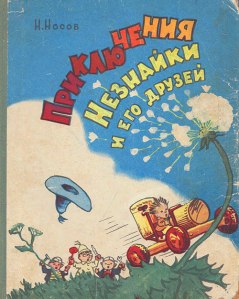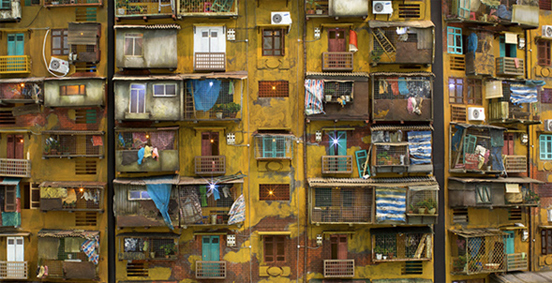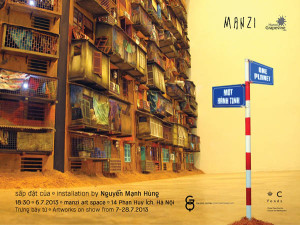Đọc bài viết này bằng tiếng Việt tại đây
This post was originally written in 2014
Although Soviet Union was separated in 1991, its traces still remain in Vietnam, especially in Hanoi.
In the very first years of Vietnam socialism contribution, Soviet Union had supported Vietnam so much that at that time, many Vietnamese people called Soviet Union “the big brother”.
And now, years passed by, we can easily see the vestige of Soviet style in Hanoi. Fisrtly, it is illustrated by blocks of collective housing. They usually were built with 5 floors and a mutual stair for all the apartments. The Soviet architech seemed to be so heavy and solid with the shape of cubic and concrete walls. Each apartment always was devided into 2 rooms and a waterroom. Now, many people still living in these houses being built from 30-40 years ago at least. Because of lacking of living space, each apartment is broadened with a small room with light material, (gypsum and sheet metal) that is covered by metal fabric, that’s why in Vietnam, people call it “chuồng cọp” (tiger cage). for decorating, Hanoian usually hang ornamental plants on that cage. It really makes a mark of urban and becomes a inspiration for artists
And not only in material field, Soviet style also influenced on mental living of many Hanoian. Most Hanoians who were born in years of 70s-80s of 20th century became fond of Soviet books for children. Most of these books were pulished by Rainbow Pulishing House. So, children always called it a very cute and familiar name: “sách Cầu Vồng” (Rainbow books). Those books were printed very well with hard cover and beautiful paintings which illustrated the stories. In that period, being influenced by highly enthusiastic in socialism contribution, all the stories told about good boys and girls who was usually hard working. And if there was a not good enough boy , he would be good till the end of the story, for sure, with many helps from other good boys and girls.
For many reasons, such as tight relationship policy and unshakeable friendship between Russia and Vietnam, in the early years after revolution, these “sách Cầu Vồng” seemed to be the only books for children. The charactors, for example Mít đặc (не знаю, means I don’t know as well, from The adventures of Mit Dac and friends – Nikolai Nosov), Cá sấu Gena (crocodile Gena – Eduard Uspensky) was very familiar to Hanoi children. The author of crocodile Gena, Eduard Uspensky had said: “Children who have read this book – crocodile Gena – will never be a bad guy”. This statement also expresses education content in Soviet books at that moment.

Although there are so many more books for children than before, it’s true to say that Soviet books are more interested in than others. Till today, these books become precious and there is a trend that some people trying to get these old books for collecting or maybe for finding some memories from their childhood.
Huong Doan.
Hanoi, 21st April, 2014


